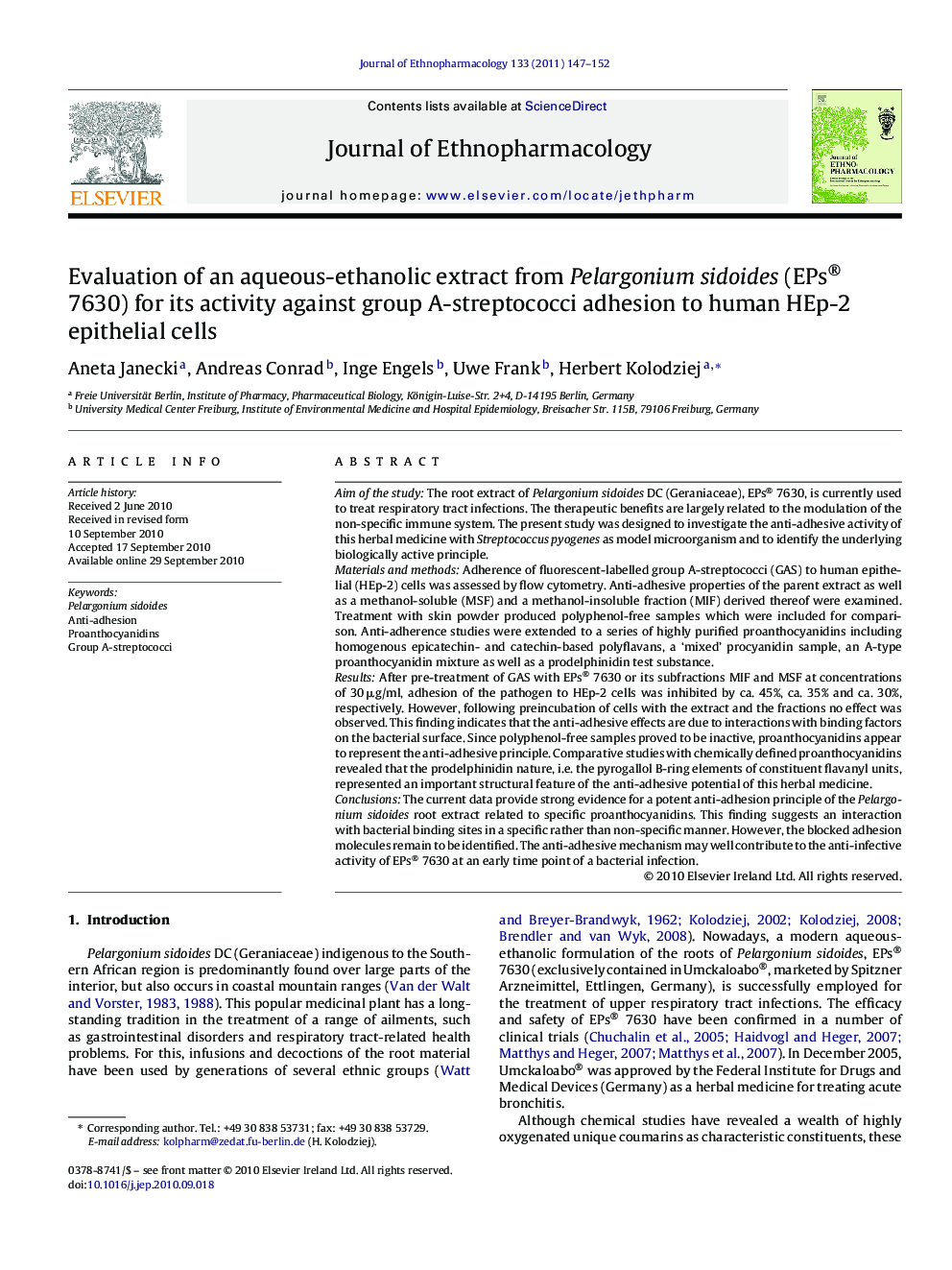| کد مقاله | کد نشریه | سال انتشار | مقاله انگلیسی | نسخه تمام متن |
|---|---|---|---|---|
| 2546046 | 1124014 | 2011 | 6 صفحه PDF | دانلود رایگان |

Aim of the studyThe root extract of Pelargonium sidoides DC (Geraniaceae), EPs® 7630, is currently used to treat respiratory tract infections. The therapeutic benefits are largely related to the modulation of the non-specific immune system. The present study was designed to investigate the anti-adhesive activity of this herbal medicine with Streptococcus pyogenes as model microorganism and to identify the underlying biologically active principle.Materials and methodsAdherence of fluorescent-labelled group A-streptococci (GAS) to human epithelial (HEp-2) cells was assessed by flow cytometry. Anti-adhesive properties of the parent extract as well as a methanol-soluble (MSF) and a methanol-insoluble fraction (MIF) derived thereof were examined. Treatment with skin powder produced polyphenol-free samples which were included for comparison. Anti-adherence studies were extended to a series of highly purified proanthocyanidins including homogenous epicatechin- and catechin-based polyflavans, a ‘mixed’ procyanidin sample, an A-type proanthocyanidin mixture as well as a prodelphinidin test substance.ResultsAfter pre-treatment of GAS with EPs® 7630 or its subfractions MIF and MSF at concentrations of 30 μg/ml, adhesion of the pathogen to HEp-2 cells was inhibited by ca. 45%, ca. 35% and ca. 30%, respectively. However, following preincubation of cells with the extract and the fractions no effect was observed. This finding indicates that the anti-adhesive effects are due to interactions with binding factors on the bacterial surface. Since polyphenol-free samples proved to be inactive, proanthocyanidins appear to represent the anti-adhesive principle. Comparative studies with chemically defined proanthocyanidins revealed that the prodelphinidin nature, i.e. the pyrogallol B-ring elements of constituent flavanyl units, represented an important structural feature of the anti-adhesive potential of this herbal medicine.ConclusionsThe current data provide strong evidence for a potent anti-adhesion principle of the Pelargonium sidoides root extract related to specific proanthocyanidins. This finding suggests an interaction with bacterial binding sites in a specific rather than non-specific manner. However, the blocked adhesion molecules remain to be identified. The anti-adhesive mechanism may well contribute to the anti-infective activity of EPs® 7630 at an early time point of a bacterial infection.
FACS-based anti-adhesive assay: Adherence of fluorescent-labelled GAS to human epithelial HEp-2 cells in the presence of P. sidoides extracts.Figure optionsDownload as PowerPoint slide
Journal: Journal of Ethnopharmacology - Volume 133, Issue 1, 7 January 2011, Pages 147–152